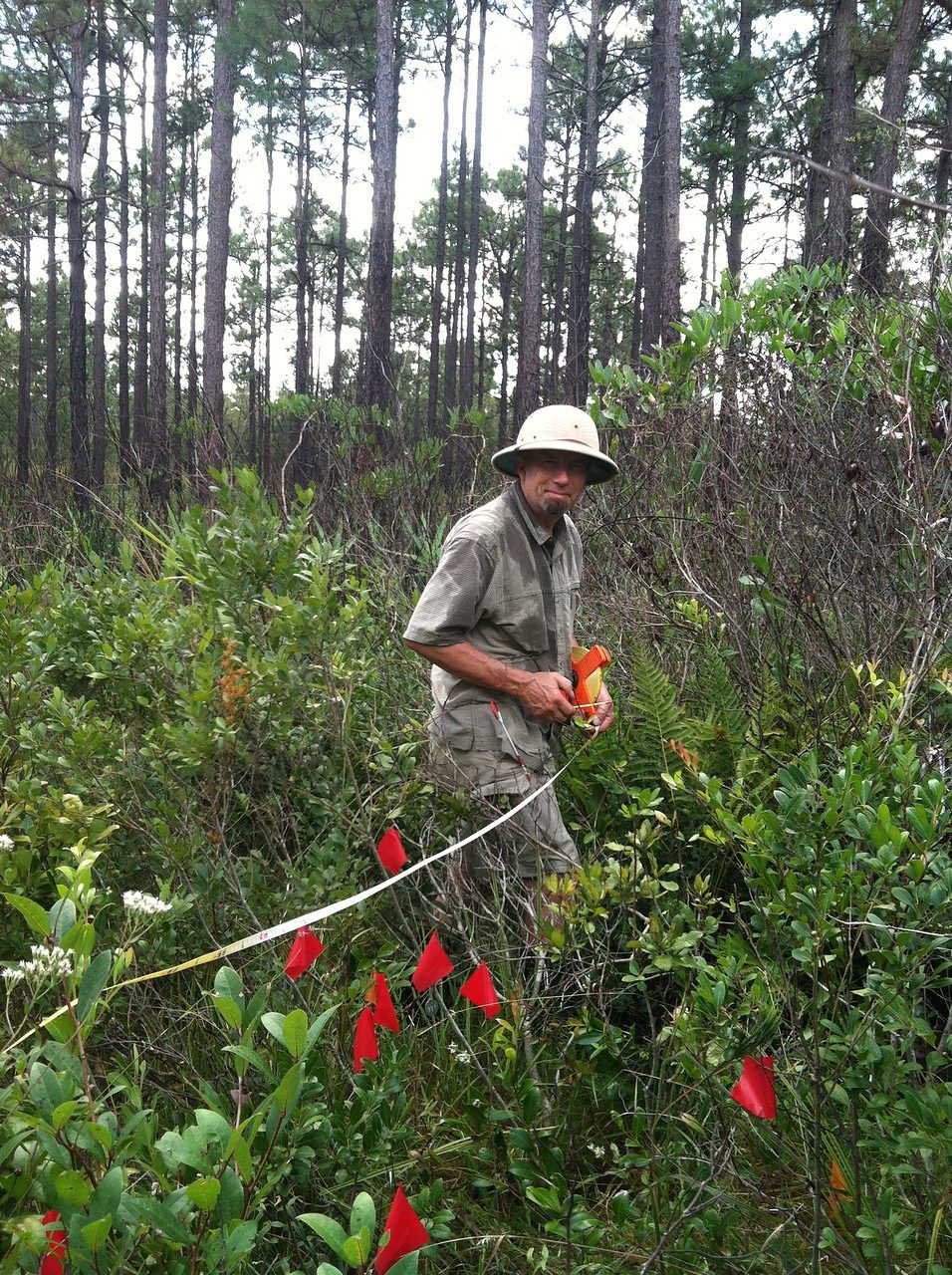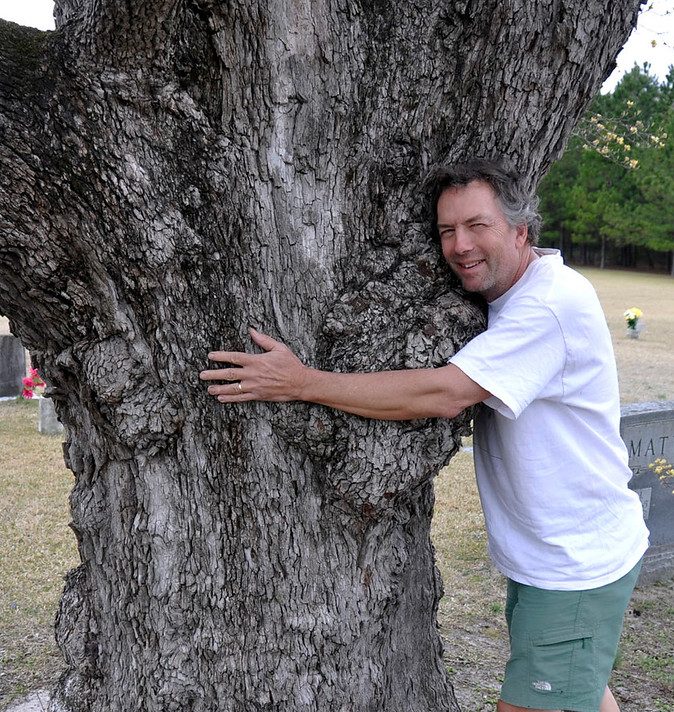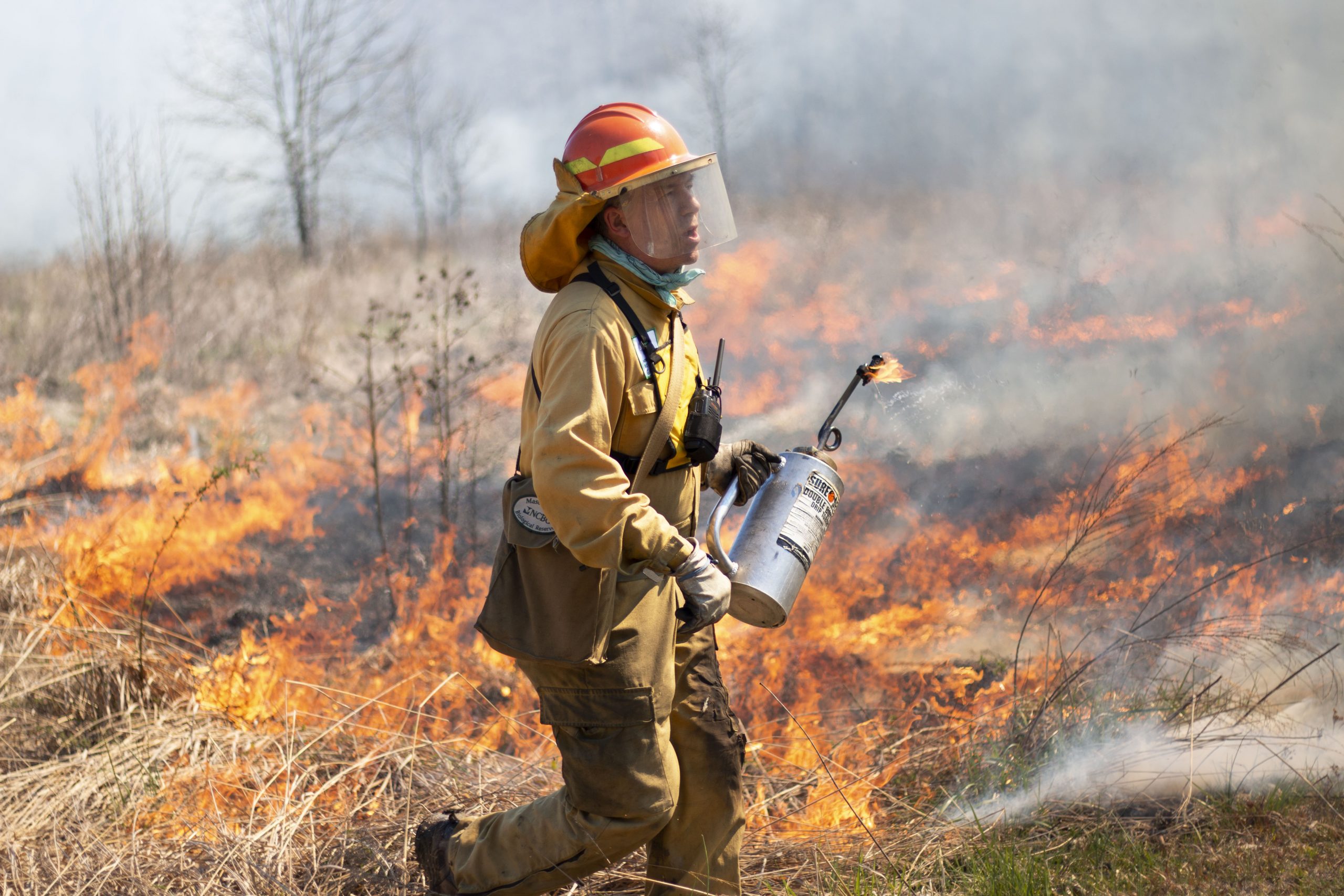Johnny Randall
Johnny Randall was drawn into the world of plant conservation as he sought to apply the principles of ecology and conservation biology. He found this opportunity as Director of Conservation Programs at North Carolina Botanical Garden, and rare plants of the southeast have greatly benefited as a result. In applying scientific principles, often on the landscape scale and through adaptive management, his exemplary work has impacted regional and statewide efforts to recover rare plants.
When did you first fall in love with plants?
It’s really hard to say when I first fell in love with plants, but I do have very early childhood memories of admiring crabgrass flowers (thinking the anthers were tiny dangling ants), climbing to the top of the white pines at my grandparents’ house, watching bees pollinate flowers, and learning to identify trees. Through my teens, I was an avid backpacker, which took me into remote and inspiring plant-rich areas. But it was in my first botany and plant taxonomy courses in college that I became profoundly smitten with plants.
What was your career path leading up to your position as Director of Conservation Programs?
After studying biology as an undergraduate I went to graduate school in Botany – studying grass systematics for my master’s and pollination ecology for my doctoral dissertation – after which I went directly into academics. I enjoyed teaching, research, and the general world of a biology professor. But after about 10 years, I felt driven to apply the principles of ecology and conservation biology rather than to simply lecture and do research. I also led a faculty protest over the proposal to build various athletic facilities in the university’s natural areas, which the entire faculty opposed. The university president moved ahead with these plans, I resigned my position, and began looking for other academic jobs. Coincidental with this athletics/nature preserve brouhaha – one of my best friends, who happened to work at the NC Botanical Garden, sent me the job ad for someone to develop a NCBG Conservation Program! I never looked back.
Today’s Conservation Department has five permanent staff, five seasonal paid interns, twelve stalwart weekly volunteers, and a regular crew of UNC-Chapel Hill work-study students. This group is the real Conservation Champions!
What are a couple of the major threats/challenges facing rare plants in North Carolina/the Southeastern US? How has your, or your institution’s, work addressed them?
The North Carolina Plant Conservation Program (PCP), which has close ties to NCBG, actually uses “threat” as a rare plant listing criterion. PCP categorizes species’ threats accordingly: Development (impacting 157 species), Fire Suppression (126 species), Incompatible Forestry (89 species), Hydrological Alteration (72 species), and Invasive Species (71 species). With a growing interest statewide in using prescribed fire, I predict some relaxation of this threat, but I also foresee increasing threats from development, invasive species’ effects, and of course hydrological alteration through sea level rise.
NCBG holds approximately 1,100 acres of nature preserves, to which we continue to add more. We manage these lands with invasive plant control, prescribed burning, and active restoration/rehabilitation. In addition, our NC Botanical Garden Foundation, Inc.,is a land trust that owns land and holds conservation easements. On the ex situ side, NCBG hosts collections of 56 National Collection taxa along with hundreds of the more common species. We also have numerous rare plant recovery projects – some of which span over 20 years.
What about working with plants has surprised you?
Although no longer particularly “surprised,” I am constantly flabbergasted and dismayed over “plant blindness.” Most humans are so completely ignorant about how amazing plants are in their diversity of form, adaptations to most any environment, the vast array of pollination mechanisms, their usefulness in our daily lives, the essential basis of food webs, and how plants are generally ignored or taken for granted as a primary guardian against climate change.
Please share one of your plant conservation projects.
Rather than limiting this to an individual species, I will highlight a rare plant community restoration project that benefits over 50 rare plant taxa! The NC Botanical Garden’s Penny’s Bend Nature Preserve is an 84-acre remnant Piedmont savanna. A severely fire-suppressed system, twenty years ago we began burning on a regular 2-3-year fire frequency. To our delight, returning fire to this ecosystem has been transformative: sapling-choked woodlands are now more open and diverse, sun-loving herbaceous plants thrive, and we are reintroducing rare plants that dropped out from the years of fire suppression.
But if I had to pick one National Collection species-specifc project to spotlight, it would with Venus flytrap . Our current recovery efforts combine range-wide seed collection for both long-term storage and more immediate reintroduction and population augmentation, and genetic architecture analyses that will hopefully reveal migration patterns over the eons (i.e., where it found refugia during inter-glacial periods and where conservation efforts should be directed). The wet pine savanna ecosystem within which Venus flytrap occurs is one of the most species-rich on Earth – and entirely dependent on a fire frequency of 1-3 years!
What emerging science (methods, approaches, discoveries) excites you most?
I am intrigued by the abundance of cryptic species that are hidden in plain sight. Many of these are necessarily rare and require plant systematics studies to confirm their unique identities. Combining genetic, morphometric, and common garden experiments is a powerful combination of contemporary “next generation” approaches with long-recognized methodologies. Coupled with this are phylogeographic studies that help show the patterns of plant migration, colonization, and speciation across entire regions.
What is one of the biggest challenges in land management in your region?
Using prescribed fire on both the larger landscape level preserves (>100 acres) and on small, but important, sites in the rural/urban interface is a huge challenge. According to many ecologists, fire suppression has had more pervasive and widespread negative effects than anything else on North American biological diversity. Not only is it a challenge to safely implement controlled burns, but fire necessarily contributes CO2 to the atmosphere. Increased plant vigor after burning can help balance the CO2 emission/uptake equation, but and it’s also important to note that regular fuel load reduction from regular fires helps to prevent catastrophic wildfires that produce tremendous amounts of carbon. But perhaps what is most important is to return a natural fire process that so greatly benefits entire ecosystems.
-

Young Johnny has several childhood memories observing nature and is pictured here with trailing phlox (Phlox nivalis). -

Johnny in the Colorado Rockies in the days of his academic career. -

Johnny contemplates the large pitcher plant, an Okee giant (Sarracenia minor) in the wild. -

Johnny Randall monitors sandhills lily (Lilium pyrophilum), a species which benefits from regular burns. -

NCBG’s work with the Venus flytrap (Dionaea muscipula) has examined many of the issues this declining species faces. -

Johnny’s tree hugging ways brought him to the world of conservation after starting his career in academia.
